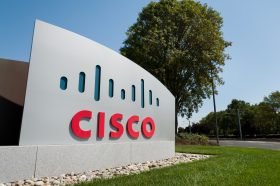MIT Sloan's Roadmap to Digital Transformation

(Editor's Note: This article was excerpted from a blog series about the Golden Age of IT published on the ZeroStack website. Visit the ZeroStack blog here. Content sponsored by ZeroStack.)
New technologies are coming at a pace never before seen in history. Cloud, AI, and portable workloads are changing IT at the speed of light. But what impact does this have on your business? Moving fast means taking risks, but a bigger risk may be doing nothing.
Many IT professionals feel overwhelmed by the pace of innovation. It's important to take a deep breath and evaluate a clear-headed strategy to implement some of these technology tools in the business case known as "Digital Transformation."
Digital Transformation sounds great in magazine articles (and blog posts), but it is difficult to execute. But doing something will get you a lot further than doing nothing. Ask the CEO and CSOs of Equifax, who did nothing about IT security and ended up failing. You need a plan.
Almost all business success today is related to digital transformation. This is not trivial, as witnessed by Amazon's climb to the top of the business pyramid through its slavish devotion to digitization, automation, and customer experience. It now owns the majority global market share of ecommerce and retail in general, as well as an increasing portion of the IT cloud.
An interesting executive study gives us a good roadmap to this success, whichever industry you serve as an IT professional. Let's take a look at a good roadmap to digital transformation.
The MIT Sloan Management Review recently conducted in-depth research with executives about how managers can use so-called digital transformation initiatives to improve their businesses. The research was based on interviews with 157 executives in 50 companies, typically with more than $1 billion in sales.
According to the study, executives are focused on digitally transforming three key areas of their enterprises: customer experience, operational processes, and business models. Each of these has differing elements. These elements include the following initiatives, assigned to each category. The categories looked like this:
Transforming Customer Experience
- Customer Understanding – Building analytics capability to understand customers in more detail.
- Top-Line Growth – Companies are using technology to enhance in-person sales conversations.
- Customer Touch Points – Enhancing customer service with digital initiatives.
Transforming Operational Processes
- Process Digitization – Using automation to enable companies to refocus people on more strategic tasks. For example, a manufacturer centralizes the HR function, allowing economies of scale through self-service and freeing HR people to focus on skills development.
- Worker Enablement – Virtualizing tools for workers so they can be more productive and liberated from physical spaces.
- Performance Management – Optimizing transactional systems to gain deeper insights into products, regions and customers, and allowing decisions to be made on real data and not on assumptions.
Transforming Business Models
- Digitally Modified Businesses – Transforming traditional products into digital offerings whether they are content, software, or business logic.
- New Digital Businesses – Introducing new digital products that complement traditional products. For example, a sports apparel manufacturer sells GPS and other digital devices to track and report on a customer's workout.
- Digital Globalization - Transforming from multinational to global operations.
This framework, based on what people are doing in the real world rather than speculation, is useful to driving IT initiatives grounded in business results.













